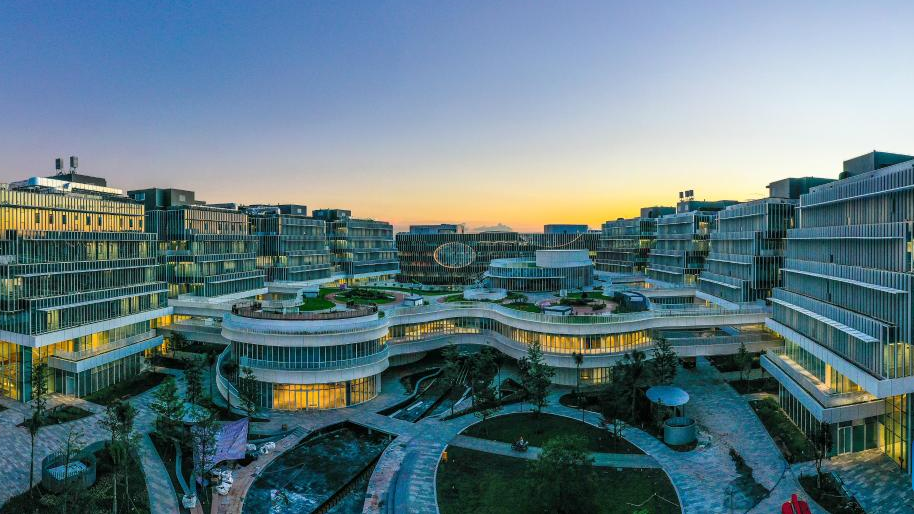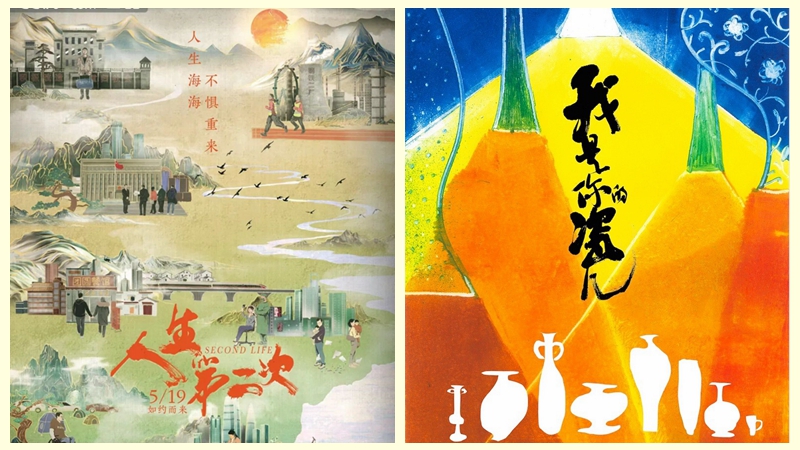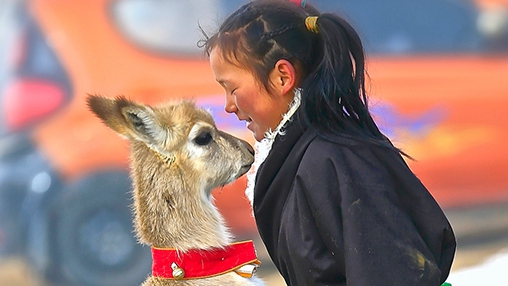Myriad efforts power development
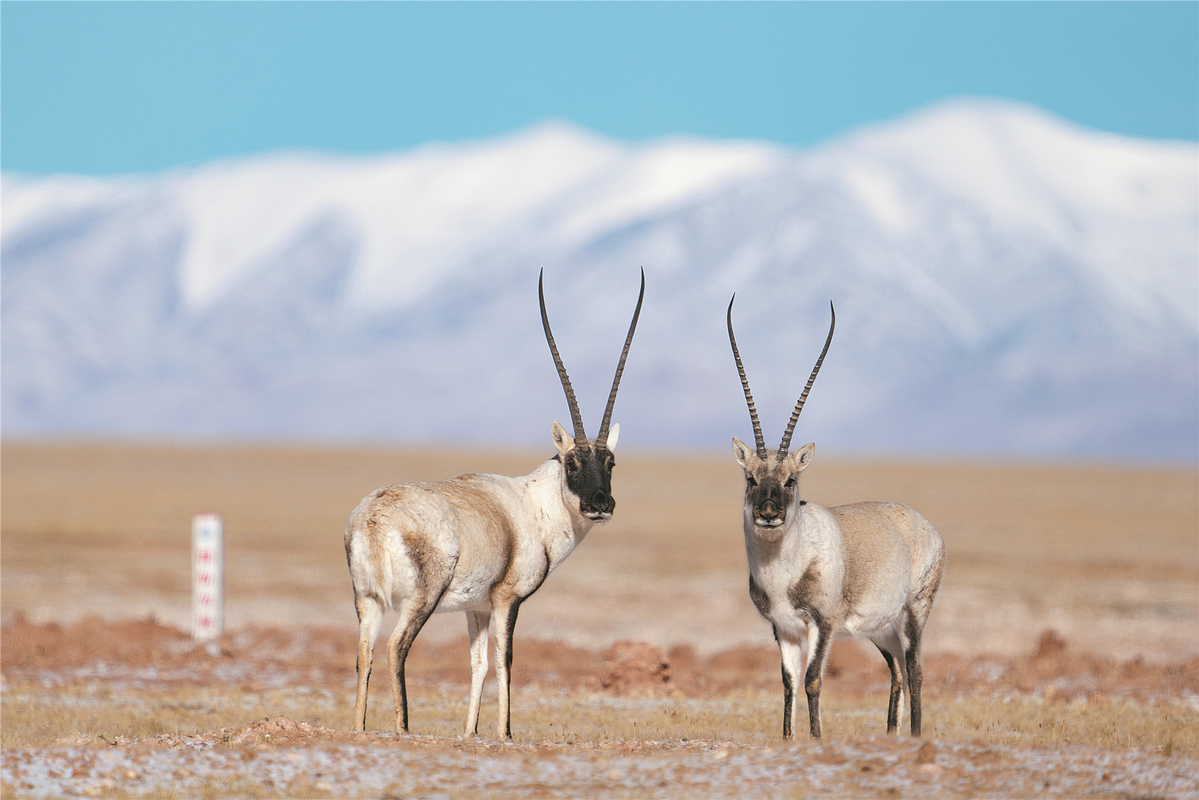
Two male Tibetan antelopes wander in the Sanjiangyuan (Three-River-Source) National Park in Qinghai. SONG ZHONGYONG/XINHUA
Qinghai province, on the Qinghai-Tibetan Plateau, stands out among China's 34 provincial-level regions as one that now boasts not only a clean environment and good ecological balance, but also rich, natural resources.
Qinghai, which occupies 720,000 square kilometers, making it the fourth-largest provincial region in the nation, is home to the three important rivers-the Yangtze, the Yellow and the Lancang, all of which benefit hundreds of millions of people. It also has abundant solar energy resources, ranking first in the nation in the generation of electricity via solar panels.
Moreover, its animal husbandry is also famous nationwide, with its mutton served in hotpot restaurants all over the country. Over the past 10 years, Qinghai has enjoyed high-quality development in several respects.
Conservation
Home to three main rivers of the nation, Qinghai has long been known as the "water tower of China".
It was in March 2016 that the Communist Party of China Central Committee and the State Council, China's Cabinet, jointly issued a plan to develop the Three-River-Source National Park, the first of its kind in China, in the province.
Since the 18th National Congress of the CPC Central Committee in October 2012, President Xi Jinping has made two inspection tours to Qinghai, where he issued important guidelines for environmental protection in the region.
Xi stressed that the protection of the three river sources should be a key focus of protection efforts in Qinghai, and he hoped that the province would honor its responsibility to improve its environment and protect the three river sources.
Following Xi's guidance, Qinghai has placed special importance on the construction of ecological civilization and has drafted action plans to systemically guide the environmental recovery of the Qinghai-Tibetan Plateau.
With the construction of the park as its primary goal, Qinghai has also implemented comprehensive plans to improve the environment near the national park, curbed the desertification and cultivated water resources there.
After six years of effort, the park officially opened last year and is 60 percent bigger than originally planned. And last year alone, 76.5 billion cubic meters of water flowed out of Qinghai to downstream regions. In the park, 17,200 herders were recruited to protect the environment, giving them a way to earn money while helping safeguard the land.

A Tibetan woman enjoys life at a nursing home in Zhidoi county, Qinghai, in March last year. ZHANG HONGXIANG/XINHUA
Unity and prosperity
To meet Xi's goal of serving the people and promoting common prosperity, Qinghai has invested over 75 percent of its fiscal income to enhance people's living standards. It has implemented 4,591 social welfare programs, and the central government has funded elderly care services that benefit 1.5 million people.
Qinghai also stresses unity among them all.
Throughout the province, the government has established 110 "pomegranate seed homes", dwellings that are clumped together like pomegranate seeds to promote unity among the groups. Particularly over the past 10 years, Qinghai has devoted a lot of effort toward cultivating a sense of solidarity among its people.
It has published a blue paper called the Qinghai Ethnic Groups Development Report and has published various series of stories about togetherness for young people in various groups to develop this feeling in their hearts.
The provincial government has also built 156 monuments, sculptures and corridors expressing this theme in parks throughout the province.
Nationally, it has also established 42 education centers to further promote the idea.
From August to September last year, Qinghai also hosted arts performances for ethnic groups to celebrate the 100th anniversary of the founding of the CPC.
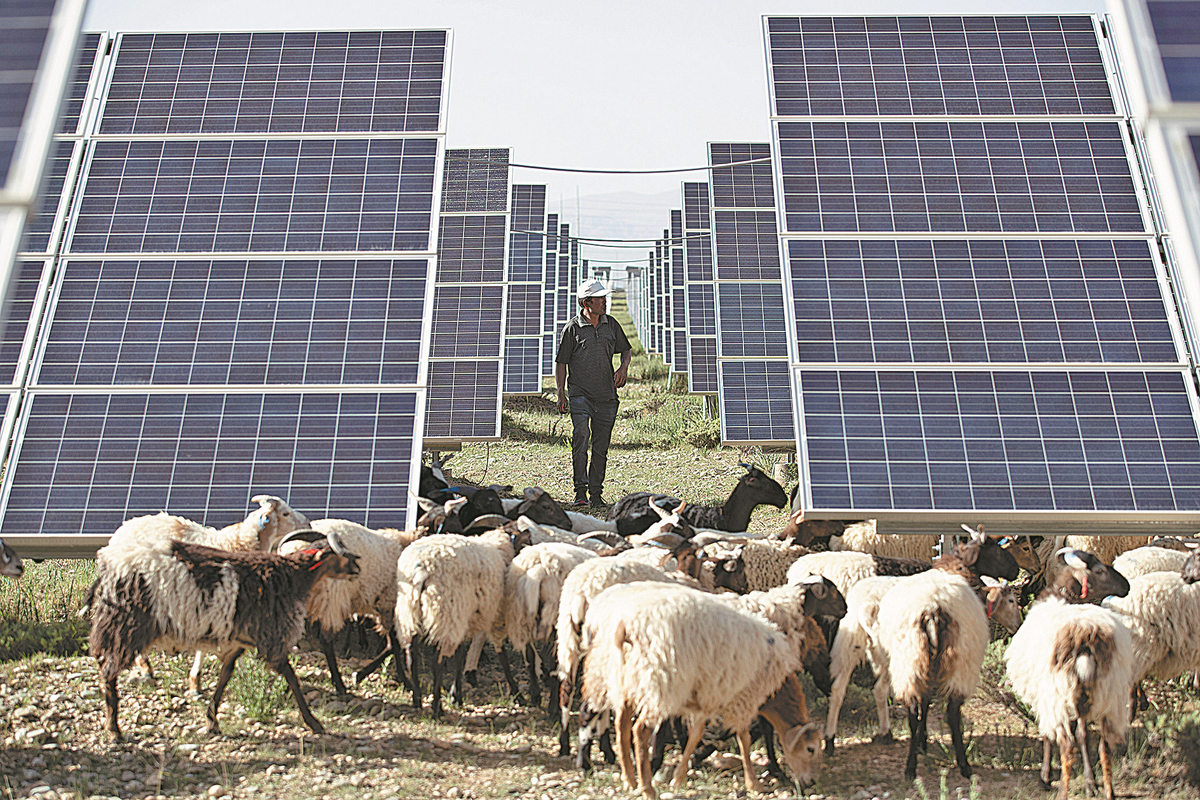
Lin Youkui herds sheep at a photovoltaic electric plant in Gonghe county, Qinghai, on July 5. KUANG LINHUA/CHINA DAILY
Low-carbon transition
Located on the plateau, Qinghai is extremely rich in wind and solar power resources. Over the past 10 years, Qinghai's wind and solar electricity generation reached a peak of 4.28 million kilowatts.
Following the global trend of low-carbon production, the province has placed more emphasis on renewable energy. It has built two renewable energy bases to the south and west of Qinghai Lake, the biggest saltwater lake in China. The capacity of each base exceeds 10 million kilowatts.
By the end of last year, renewable energy accounted for 90.83 percent of all energy in Qinghai, more than any other provincial region in the nation.
Meanwhile, Qinghai produces more than one-third of the nation's lithium batteries and generates electricity for several eastern and central provinces, such as Henan.
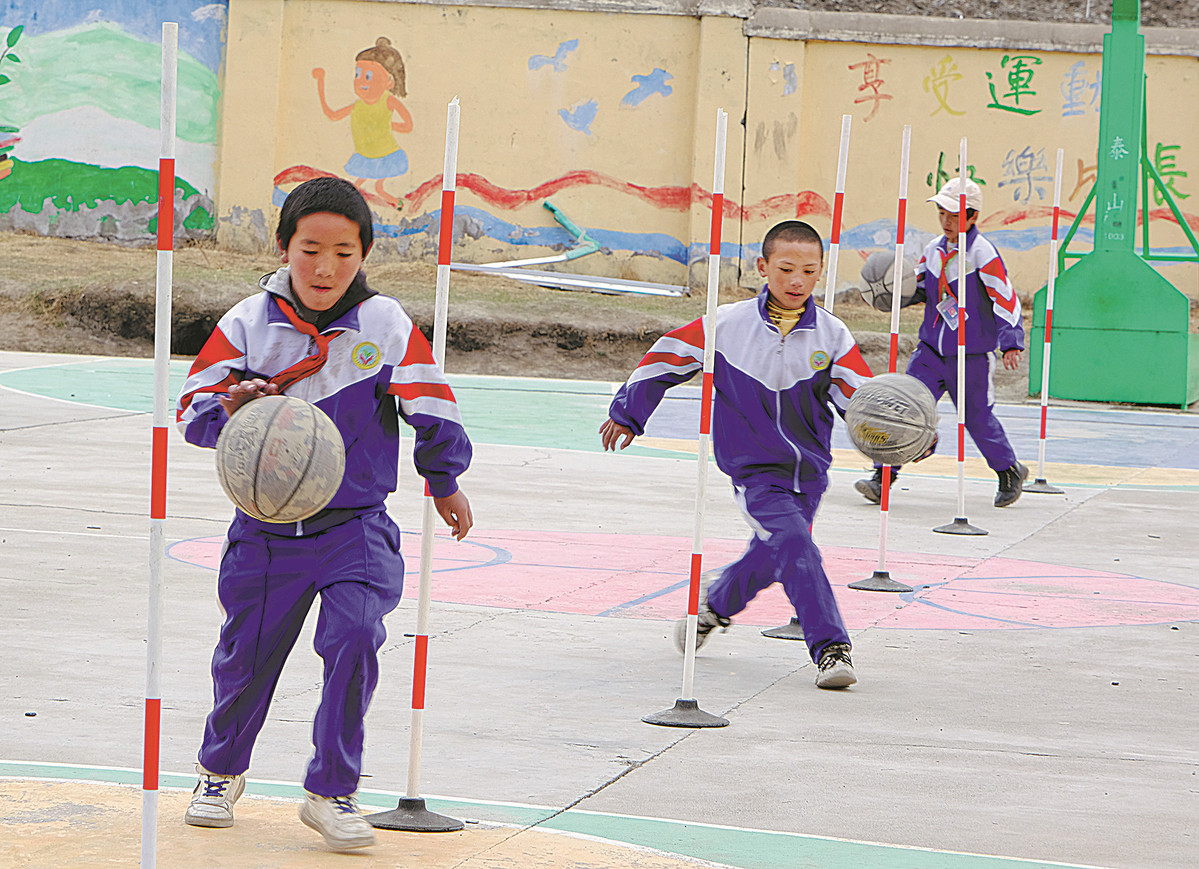
Primary students practice basketball skills at a cultural center in Chindu county, Qinghai province, on April 18. YANGXIU TANDRIN/XINHUA
Better road network
Qinghai has also paid a great deal of attention to the construction of roads and the daily transportation needs of its people.
By the end of last year, Qinghai had 86,200 km of roads, 1,021 more than in 2020. It also had improved and updated 1,727 km of roads in rural regions.
The provincial transportation department said it has invested heavily in five programs to better contribute to the high-quality development of the nation by making transportation more convenient. "We mean to build a safe, convenient, and green modern comprehensive transportation system for everybody to use in the province," the department wrote on its official website.
Since 2012, Qinghai's combined efforts have led it to realize high-quality economic development, and its environment has greatly improved. In that time, Qinghai Lake's size has increased by 220 sq km to 4,625.6 sq km. The province's wetland is the largest in China, and the water quality of its rivers is good.
Moreover, its regional GDP has more than doubled, from 152.8 billion yuan in 2012 to 334.6 billion yuan ($49.26 billion) last year.
The disposable income per person has grown by 10 percent every year since 2012, higher than its economic growth rate over the same period, and its public services have been constantly improving.
Photos
Related Stories
- Work team sent to China's Qinghai to guide rescue efforts
- 84.8 pct of power generated in China's Qinghai in H1 is by clean energy
- In pics: scenery of Qilian County in China's Qinghai
- Magnificent mountain scenery in Qinghai
- China launches scientific expedition to investigate ice, carbon storage in Yangtze headwaters
Copyright © 2022 People's Daily Online. All Rights Reserved.







